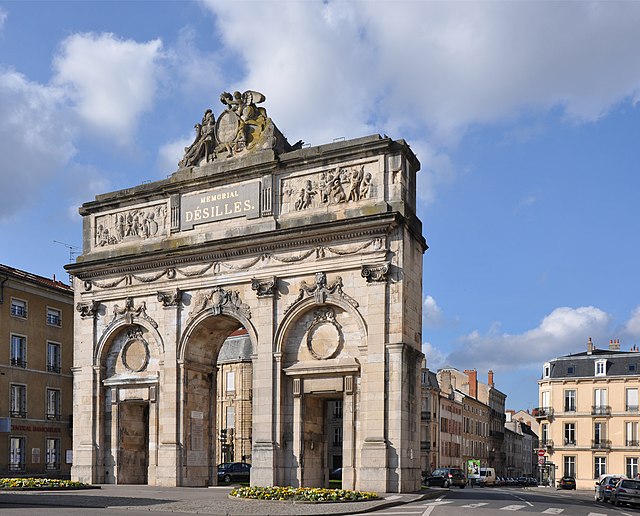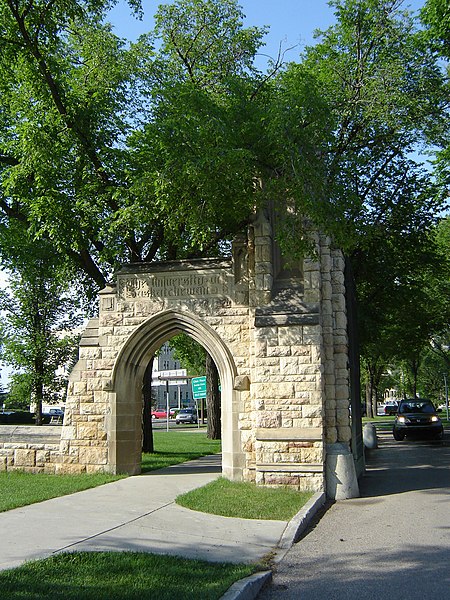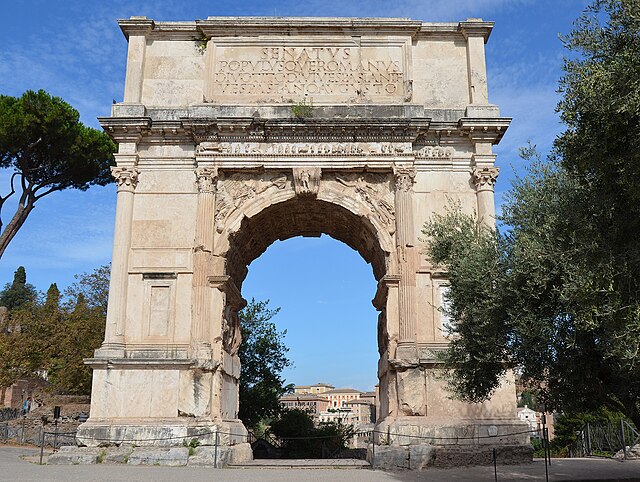Memorial gates and arches
Memorial gates and arches are architectural monuments in the form of gates and arches or other entrances, constructed as a memorial, often dedicated to a particular war though some are dedicated to individuals. The function, and very often the architectural form, is similar to that of a Roman triumphal arch, with the emphasis on remembrance and commemoration of war casualties, on marking a civil event, or on providing a monumental entrance to a city, as opposed to celebrating a military success or general, though some memorial arches perform both functions. They can vary in size, but are commonly monumental stone structures combining features of both an archway and a gate, often forming an entrance or straddling a roadway, but sometimes constructed in isolation as a standalone structure, or on a smaller scale as a local memorial to war dead. Although they can share architectural features with triumphal arches, memorial arches and gates constructed from the 20th century onwards often have the names of the dead inscribed on them as an act of commemoration.

Menin Gate, Ypres, Belgium
Porte Désilles, Nancy, France
Brandenburg Gate, Berlin, Germany
University of Saskatchewan Memorial Gates, Saskatoon, Saskatchewan, Canada
A triumphal arch is a free-standing monumental structure in the shape of an archway with one or more arched passageways, often designed to span a road, and usually standing alone, unconnected to other buildings. In its simplest form, a triumphal arch consists of two massive piers connected by an arch, typically crowned with a flat entablature or attic on which a statue might be mounted or which bears commemorative inscriptions. The main structure is often decorated with carvings, sculpted reliefs, and dedications. More elaborate triumphal arches may have multiple archways, or in a tetrapylon, passages leading in four directions.
The Triumphal Arch of Orange in Orange, France, the oldest surviving triple-arched Roman triumphal arch, probably built during the reign of Emperor Augustus (27 BC–14 AD), later reconstructed by emperor Tiberius (c. 20–27 AD)
The Arc de Triomphe, Paris, begun by Napoleon in 1806
The Arch of Titus in Rome, an early Roman imperial triumphal arch with a single archway, built c. 81 AD by Emperor Domitian to commemorate his brother Titus's victory together with their father, Vespasian, over the Jewish rebellion in Judaea
The Arch of Septimius Severus at Leptis Magna, Libya, a four-arched arcus quadrifrons, built c. 203 AD








